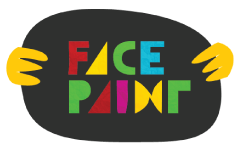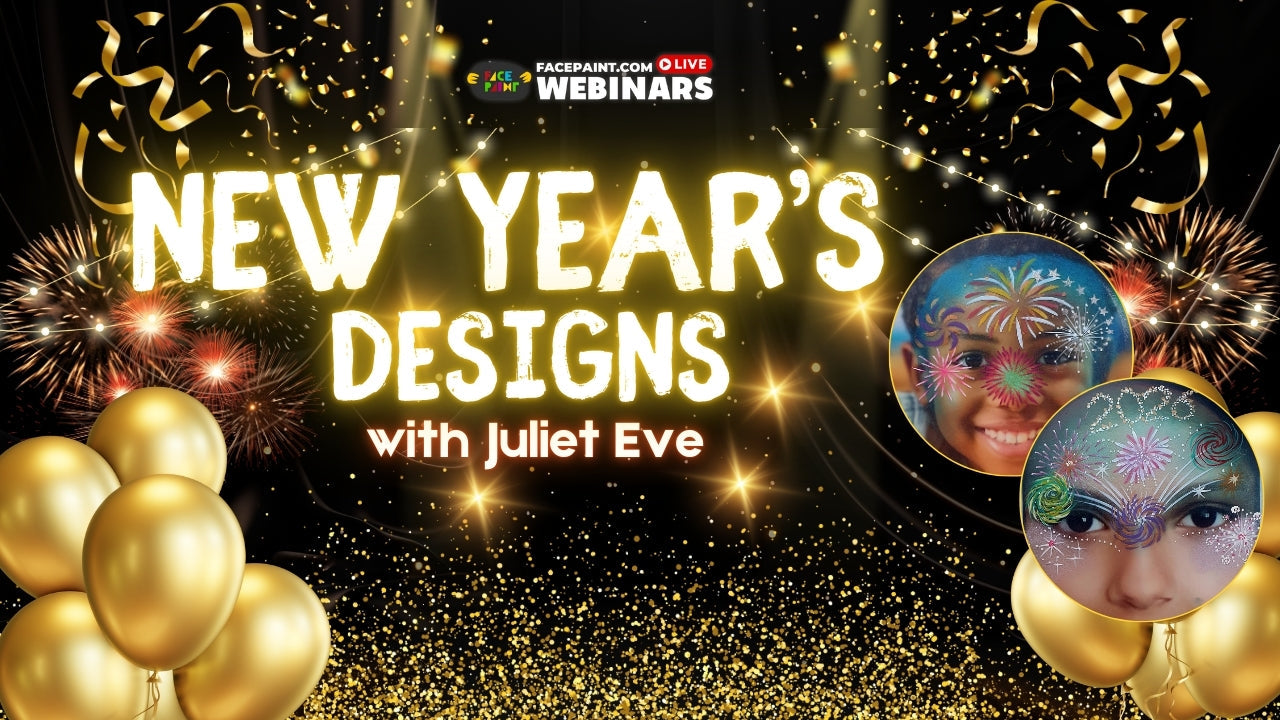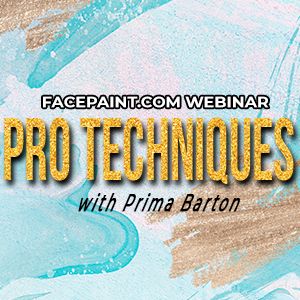
- I chose a classic placement in the center of the belly for this design. To fit the design nicely on a rounded tummy, I decided to sit my bunny, so that the height of the design is equal with its width.
- I made sure that the skin above the belly button is stretched well and doesn’t move when the mom-to-be changes her body posture. That allowed me to paint the head of the bunny without being afraid that it will distort when the mom-to-be will be standing.
- I checked the belly button. It was slightly protruding, allowing me to place the carrot over it (I would place the edge of the carrot over it if there would have been a skin fold there).
- And of course, I prepared a sketch on the paper and on a practice pad before I moved on painting the belly.
2. Fill in the bunny with white face paint. I prefer glycerin based white for the background, like Mehron or Superstar, because this type of paint is softer and is easier to blend. And we are gonna make lots of blending here! A filbert brush will work the best for this purpose.
4. It’s time to add the first shadows! The light source is above, that means that the shadow will be placed below. Apply dark pink to all of the light pink bottom parts.
5. Same thing with shading the bunny. Use regular grey and apply it on the bottoms of the cheeks, ears and paws. Regular waxy grey (like TAG, Cameleon, Diamond FX, Wolfe FX etc.) will work well here if you have a glycerin based white on the background. If you used waxy white, then metallic waxy black mixed with some white can make the blending process easier. Metallic paints blend better too. And again, use a filbert brush here and a very tiny amount of water!
7. Paint the eyes and outline the design. For this type of feminine and delicate designs I prefer adding a very soft outline with metallic black or with glycerin based black. Both of these blacks are lighter than regular wax based black. To make our bunnie’s eyes catch attention, I paint them in regular waxy black, so that they are the darkest points in the entire design.
8. Add the highlights with regular waxy white and sponge the background with light blue. I prefer a patchy background for this type of soft designs.

Materials used:
- Superstar White — for the background of the bunny
- Cameleon Pure White — for highlights
- TAG Grey — for shading the bunny
- Paradise Light Pink — for the background of the clothes, bow, paws, cheeks and nose
- Paradise Dark Pink — for shading the light pink
- TAG Earth Brown — for shading the carrot
- Paradise Black — for outline
- Cameleon Strong Black — for the eyes and the darkest shadows
- TAG Orange — for the carrot background
- Global Light Green — for the haulm
- Global Dark Green — for shading the haulm
- TAG Light Blue — for the sponged background around the bunny
- Loew Cornell round brush 795 series #3 — for the sketch and small details
- Loew Cornell round brush 795 series #5 — for filling in the pink details and the haulm
- Cameleon filbert brush #2 — for filling in the background of the bunny and the carrot
- Loew Cornell filbert brush 7500 series #10 — for blending the shadows
- Mehron green sponge — for the sponged background
I’d love to see your attempts at this design! Please, tag me on Facebook via Olga Murasev in your artwork.
Are You Learning for Fun or Going Professional?
We crafted the two most comprehensive face painting guides on the internet. The first for beginners just getting started and the second for those face painting professionally. Choose the guide that suits you best and level up your skills today!
Beginner's Guide: Your step-by-step guide for learning how to face paint
Professional's Guide: How to Become a Professional Face Painter and Get Paid
* Link to original post - FaceBodyArt.com/bunny-belly-painting-step-by-step/
 FREE SHIPPING FOR USA ORDERS OVER $100
FREE SHIPPING FOR USA ORDERS OVER $100








Leave a comment (all fields required)